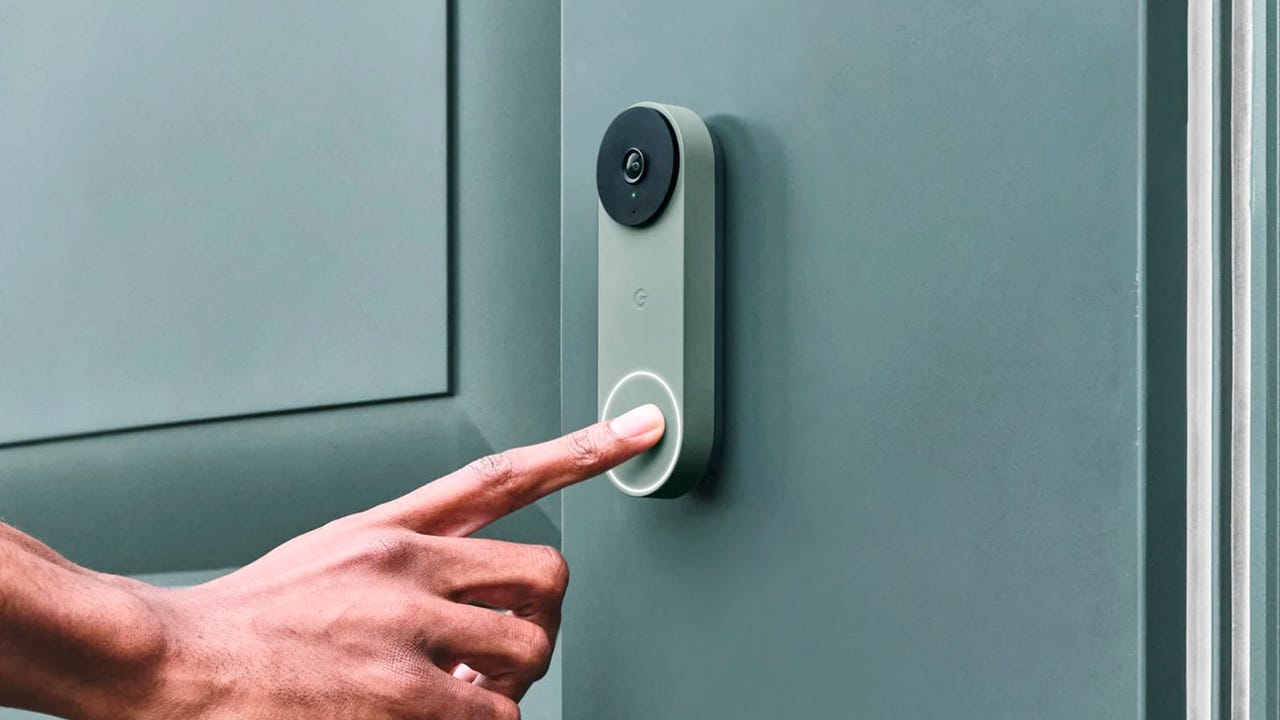
































Right now, Mother Nature doesn't seem to know what she wants to give us this winter. Where I am, it's been regularly shifting between winter and spring temps weekly and sometimes even daily. Eventually, however, the icy chill of winter will settle in and it'll be time to avoid going outside.
Not so much for those Nest and Ring doorbells that rely on batteries to keep you informed of visitors (welcome or unwelcome). Rechargeable batteries don't always fare so well as the thermometer drops near and below freezing. And although you can't always protect those batteries from the elements, there are things you can do to prevent those colder temperatures from shortening the life of the batteries contained within.
Here are a few tips I've used over the years.
Also: The best video doorbells you can buy
One of the first things you should do is know the minimum operating temperature for those devices. For example, the lowest temperature a Nest Doorbell can tolerate is -4 degrees F. As for the Ring, the battery may stop working when the temperature hits -5 degrees F. If I know the temperature is going to dip near or below those levels overnight, I will bring the devices indoors to protect the batteries. After all, they certainly aren't doing any good outside if the batteries aren't functioning. And given mine aren't hardwired, there's no point in leaving them stuck to the door when they won't work.
When you bring your Nest or Ring doorbell in for charging in the winter, let them reach room temperature before charging. If you plug them in right away, it could either damage the battery or make the charging take longer (it may not work at all until the battery is no longer freezing).
Never charge your smart doorbell outside in the winter. Always bring them indoors for charging.
When you charge your Nest or Ring doorbells, make sure to always charge them to 100% before you return them to their mounts. As the temps drop, the batteries will struggle to hold a charge. If you take them out at less than 100%, you effectively kill a charge cycle. You want to get the most out of each cycle, and since the batteries will already be prone to drain more quickly in the cold, you want to give them the best chance they have to last for that cycle.
Also: Is your Google Nest camera randomly going offline? You're not alone
During months that don't succumb to extreme weather, you're probably used to waiting until you get an alert to charge your smart doorbell battery. That could mean you've waited until the battery is at 15-20% charge. When the temps dip into the extreme lows, you'll want to check battery life daily. Because the battery will drain faster, you'll want to be in the know so you don't wind up with a dead battery. This can happen as quickly as overnight, so make a habit of checking the battery status every morning.
During the winter months, you can always turn off battery-draining features. This will depend on what doorbell you use, but you might find features like motion detection to be an issue. If you turn off every feature but those you absolutely need, you might find you'll get more life out of each charge. Then, when the temps reach a more humane level, you can re-enable those features.
If your doorbell is located in a spot that gets little to no sunshine in the winter, you might consider moving it (either permanently or temporarily) to a spot that gets a good amount of sun. That sun will help to keep the device warmer during the day. You might even try purchasing a second mount, so you can more easily move the device (depending on the season).
With just a bit of thought and care, you can ensure those battery-powered doorbells will continue serving you well. Rechargeable batteries don't last forever, but by following these steps, you'll find that last a bit longer (so you're not having to prematurely replace them).
 Etiquetas calientes:
Casa y oficina
Etiquetas calientes:
Casa y oficina